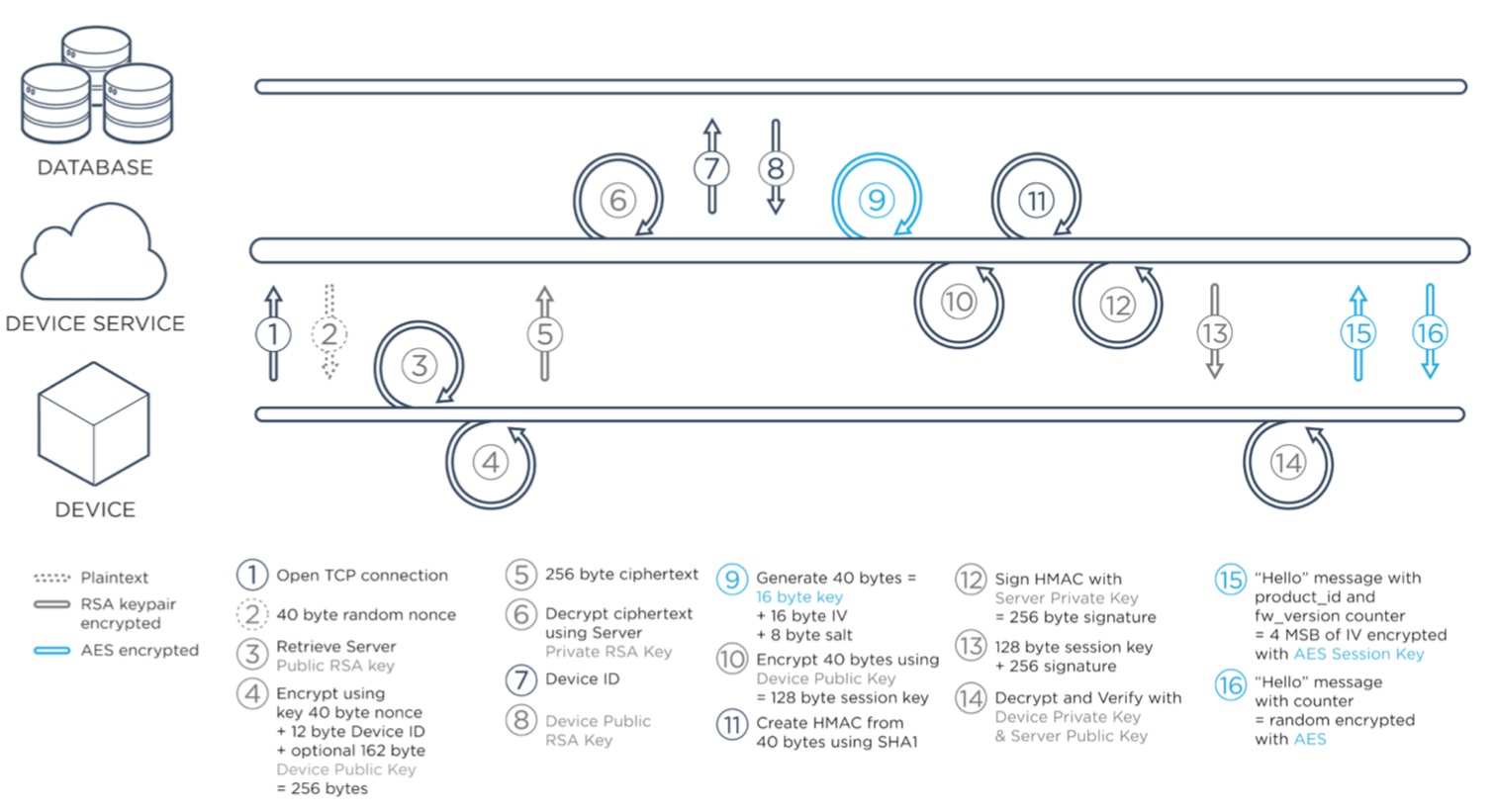Security Checklist for the Internet of Things
Risks include:
- Customer data exposure E.g. fitness trackers, heart rate monitors, sleep trackers
- Corporate Data Exposure
- Physical Damage E.g. Heating elements found in connected ovens and coffee makers
- High-Risk downtime E.g. Connected medical devices
- Broader Liability
- Reputation and Brand damage
Security checklist for IoT products:
- Operating systems: Each open port and available protocol is a potential point of attack
- Applications: The more programs runnings on a device, the larger the task of auditing those programs for security
- Dependancies: Outside code dependancies such as libraries must be kept up to date and validated
- Communication: Device to cloud communications should be encrypted
- Cloud: Securing cloud and cloud servers
- User access and security: 2FA and strong password requirements
- Penetration testing
- Firmware application code reviews
- Security update mechanism
Operating system vs Micro-controllers
Each open port and available protocol is a potential point of attack. Code on micro-controller units (MCUs) runs “bare metal” with no supporting operating system; each type of communication required by a product is intentionally added by the product developer. In contrast, many SOCs and Linux systems have multiple open ports by default, adding a vast array of attack vectors product developers may not even be aware of.
Cloud
Every device ships with a unique device-specific RSA or Elliptic Curve key-pair, and has a pinned Cloud public key. The device public key is typically pinned in the cloud during manufacturing, but can be updated later by an authorized user. Strong unique keys and bidirectional pinning help prevent man-in-the-middle attacks against devices and data.
TCP handshake
Particle’s TCP service uses an RSA handshake to establish a session key for a fast rotating AES-128-CBC session. Each message is encrypted and is checked via a message id for replay attacks or out-of-order messages. Any anomaly in the session causes it to immediately end. Although all Particle devices include hardware random number generators, the RSA/AES cloud handshake includes a cryptographically random nonce, to ensure there is sufficient randomness on these low-power devices.
Encrypted handshake in the Particle TCP service

UDP Services
Particle’s UDP service uses DTLS, a version of TLS designed for low-bandwidth and lossy UDP packets. TLS is the new standard for secure browser traffic worldwide. Particle leverages the open source mbed TLS library supported by ARM and used by other security conscious companies such as OpenVPN, nginx, and Linksys. 256 bit ECC keys are used for the DTLS service, roughly equivalent to a 3072-bit RSA key.
Over The Air updates
The device is also protected against failures during the Over The Air (OTA) firmware update process. Each firmware module includes a verifiable hash and metadata to ensure the code is appropriate for that platform and product. If a corrupted firmware is sent to a device, or a mismatched firmware for that product, the device will safely fall back to the last known good firmware stored locally in flash.
Network authentication credentials
Additionally regardless of whether the device connects via Wi-Fi, Cellular, or other radio protocols, the network authentication credentials are never transmitted to the cloud, and are only stored locally or on a SIM card.
ISO Standards
The Particle Cloud uses best-in-class hosting with ISO 27001, 27017, and 27018 physical security and risk management, and Particle monitors and tests its infrastructure regular- ly for potential vulnerabilities.
Dealing with API based attacks
API-based attacks are filtered out with a scalable traffic load balancer. The API utilizes a 2048-bit TLS certificate and is accessible only via HTTPS. It also supports the OAuth 2.0 standard for secure login for integrations, with strongly salted and hashed passwords likely to resist brute force attacks and compromise.
Personal information
As a matter of policy, the Particle Cloud does not store any personally identifiable information or data that could be used to compromise products or customers.
DevOps
Particle uses a sophisticated dev-ops system of automated deployments, containers, and service checks to automatically ensure servers are up-to-date, and running only the expected applications. Servers are protected with a variety of automatic intrusion detection software to discourage automated attacks.
Engaging the experts
Particle regularly hires professional penetration testing consultants to proactively prepare for any emerging threat models. We also engage in an open dialogue with a large, security-conscious community of developers and researchers.
New employee training
New employees at Particle are required to use two-factor authentication for any service that supports it, and their workstations must use full-disk-encryption. New employees go through social engineering training, and every Particle employee must use a password management application to generate strong, random passwords for every account they access. When we need to share secrets internally, they are strongly encrypted using a trusted, employee specific public RSA key, and that message is destroyed afterwards.
Maintaining the security culture
We celebrate our security culture by playing security games and staying current with trends and best practices. This creates a positive atmosphere and increases adoption of simple practices such as locking your workstation, or not connecting an unknown / found device to a trusted network.
Everyone can escalate
Every Particle employee knows to escalate anything resembling a security bug or issue to the engineering team, and that team knows to evaluate and address that concern as soon as possible.